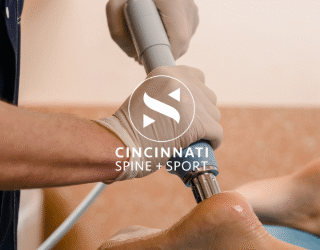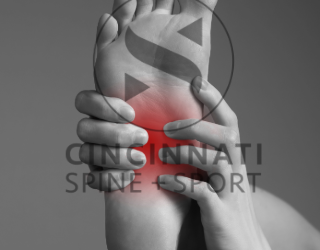For overhead athletes—whether you’re a baseball player, swimmer, tennis enthusiast, or weightlifter—the demands placed on the shoulders are immense. A common problem these athletes face is tightness in the Latissimus Dorsi (or “lats”), a large muscle that plays a crucial role in shoulder mobility and stability. When the lats become tight, they can limit the range of motion and increase the risk of injury. One highly effective technique for addressing this issue is ELDOA Myofascial Stretching, which specifically targets the fascia (the connective tissue) around muscles and joints, including the lats.
What is ELDOA?
ELDOA (Étirements Longitudinaux avec Decoaptation OstéoArticulaire) is a unique method of stretching designed to create space and release tension in the joints, muscles, and fascia. Developed by French osteopath Guy Voyer, the primary goal of ELDOA is to improve posture, reduce pain, and enhance mobility by targeting specific joints and the surrounding myofascial tissues.
Unlike traditional stretching, which focuses on lengthening muscles, ELDOA stretches are designed to decompress the fascia, providing a deep release of tension. By holding precise postural positions, athletes can create space in the joints, reduce compression, and improve overall movement quality.
The Importance of the Latissimus Dorsi for Overhead Athletes
The Latissimus Dorsi is one of the largest muscles in the upper body, spanning from the lower back to the upper arms. It’s responsible for many key movements, including shoulder extension, adduction, and internal rotation. For overhead athletes, the lats are constantly engaged, whether you’re throwing a ball, serving in tennis, or pressing weights overhead.
However, due to the repetitive nature of overhead movements, the lats can easily become tight and restricted. This tightness can:
- Limit Shoulder Range of Motion: Tight lats can restrict your ability to lift your arms fully overhead, impacting your performance in sports like swimming, baseball, and weightlifting.
- Cause Postural Imbalances: A tight Latissimus Dorsi can contribute to poor posture by pulling the shoulders downward and inward, leading to forward head posture and rounded shoulders.
- Increase the Risk of Injury: Restricted shoulder mobility puts excessive strain on other muscles and joints, leading to shoulder impingement, rotator cuff injuries, and lower back strain.
By addressing fascial tension in the lats, athletes can improve their shoulder mobility, enhance performance, and reduce the likelihood of injury.
How ELDOA Helps Relieve Fascial Tension in the Latissimus Dorsi
ELDOA stretches work by targeting the fascia, a connective tissue that surrounds muscles and joints. Fascial tension can restrict movement and cause discomfort, especially in athletes who rely on a full range of motion in their shoulders. ELDOA positions are specifically designed to stretch and decompress the fascia, improving flexibility and reducing restrictions.
Here’s how ELDOA specifically benefits overhead athletes with tight lats:
- Increased Shoulder Mobility:
- ELDOA for the Latissimus Dorsi involves positioning the body to open up the shoulder joint and stretch the fascial connections in the lats. This helps improve the ability to fully lift your arms overhead, enhancing performance in sports that require this movement.
- Reduced Fascial Adhesions:
- Repetitive movements in overhead sports can cause fascial adhesions, where the fascia becomes stiff and stuck to the muscles. ELDOA stretches help release these adhesions, restoring mobility and flexibility in the shoulder girdle.
- Improved Posture:
- By targeting the lats and surrounding fascia, ELDOA can help correct postural imbalances caused by tightness. This reduces the strain on the shoulders and lower back, helping athletes maintain a more balanced and aligned posture, both in sport and daily life.
- Enhanced Performance and Injury Prevention:
- Releasing fascial tension allows for smoother, more efficient movement. Overhead athletes with greater shoulder mobility can perform at higher levels without risking injury. ELDOA’s decompressive nature reduces joint pressure, making it less likely for athletes to develop overuse injuries.
ELDOA for Latissimus Dorsi: How to Perform the Stretch
Performing ELDOA stretches requires a precise body position to ensure the best results. Below is a simplified version of an ELDOA stretch designed to target the Latissimus Dorsi:
- Start Position:
- Sit on the floor with your legs straight in front of you, slightly wider than hip-width apart. Keep your spine tall and your shoulders back.
- Arm Position:
- Reach both arms overhead, trying to extend as far as possible without losing your posture. Imagine you’re reaching up through your fingertips, aiming to create length through your entire upper body.
- Create Tension:
- As you hold this position, engage your core and lower back to maintain stability. The goal is to create a sense of decompression from your lower back, up through your arms, and into your shoulder joints.
- Hold the Position:
- Hold this stretch for 60-90 seconds, breathing deeply. You should feel a gentle stretch through your lats, chest, and shoulders. Avoid slumping forward or losing your alignment.
- Release:
- Slowly lower your arms and relax. Repeat this stretch 2-3 times.
This ELDOA stretch not only targets the Latissimus Dorsi but also improves overall shoulder and spinal alignment, making it highly beneficial for overhead athletes.
Conclusion
For overhead athletes, maintaining shoulder mobility and flexibility is essential for peak performance and injury prevention. ELDOA Myofascial Stretching provides a powerful tool for relieving fascial tension in the Latissimus Dorsi, improving range of motion, reducing pain, and enhancing posture.
At Cincinnati Spine and Sport, we integrate ELDOA into our holistic approach to care, helping athletes maintain optimal health and function. If you’re an overhead athlete struggling with shoulder tightness or limited mobility, contact us today to learn how ELDOA stretches and our other services can help you move better and stay injury-free.






